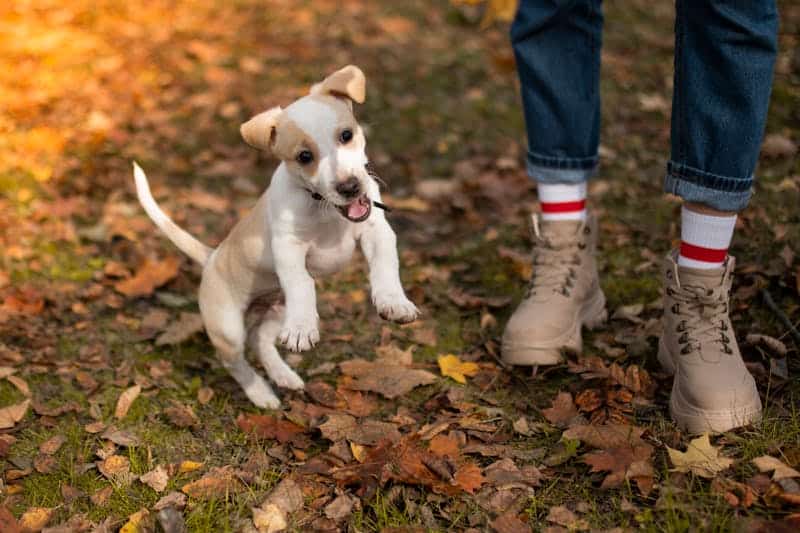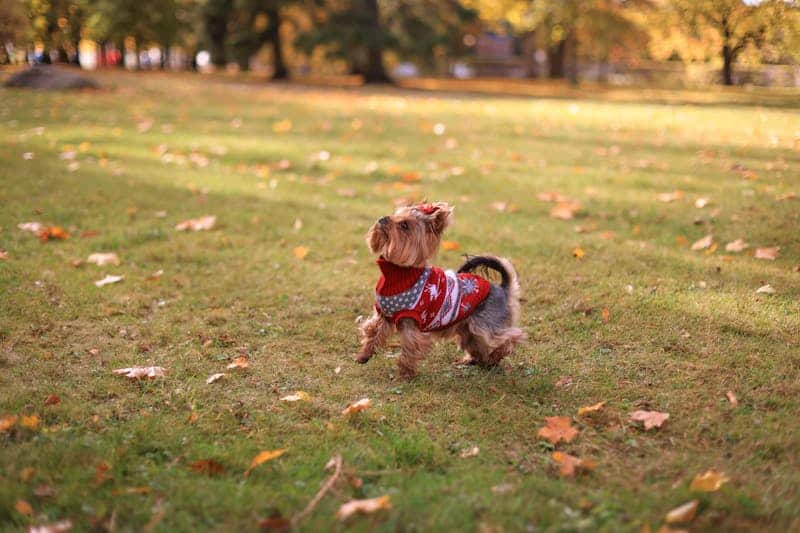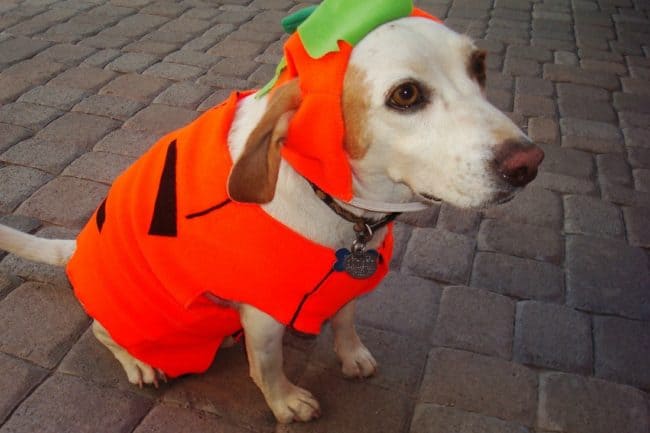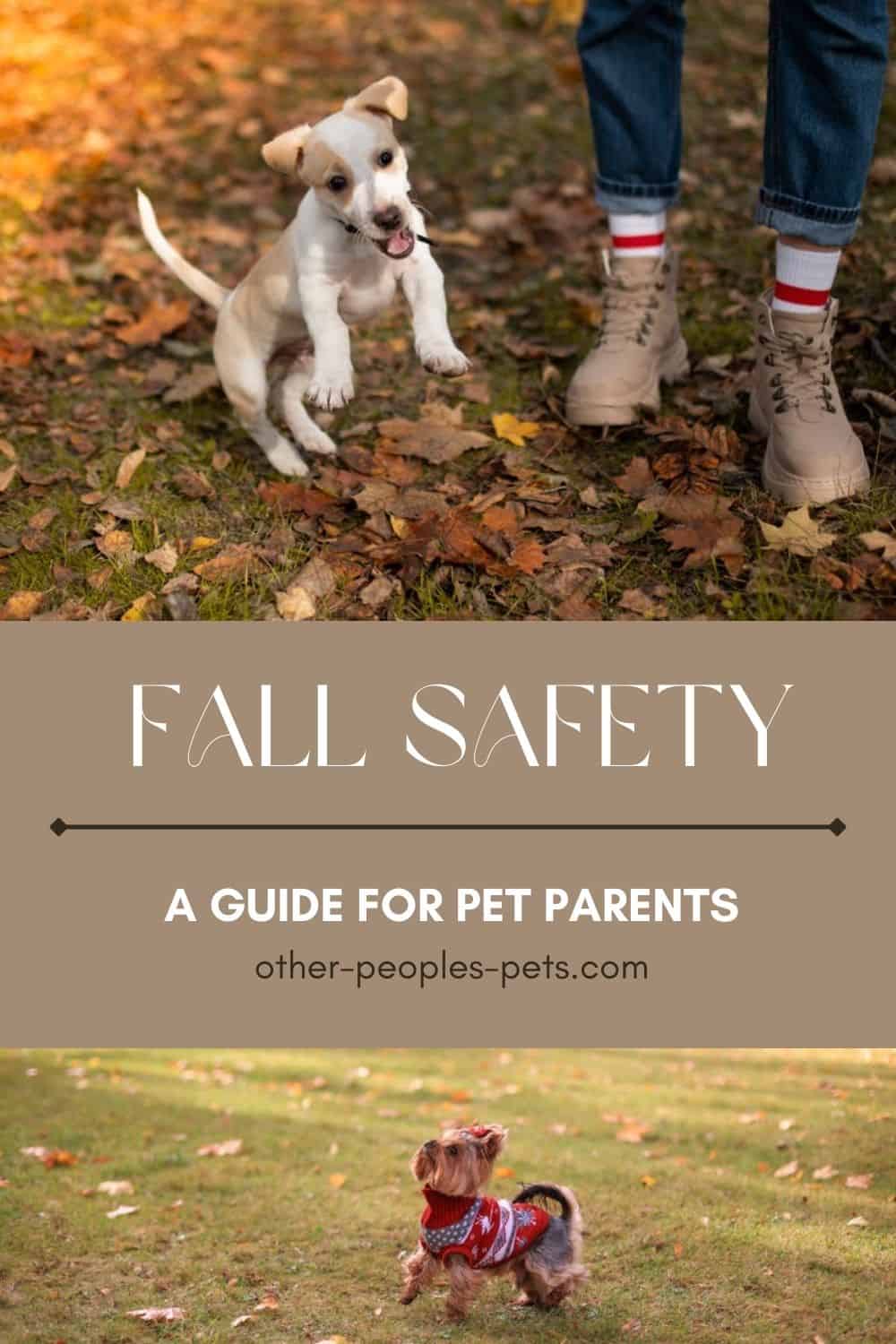Last Updated on September 1, 2024 by ellen
Check out these fall pet safety tips. As the vibrant colors of autumn leaves fill the landscape, it’s the perfect time to enjoy the crisp air and scenic beauty with your pets.
Posts may be sponsored. This post contains affiliate links, which means I will make a commission at no extra cost to you should you click through and make a purchase. As an Amazon Associate I earn from qualifying purchases.
Table of Contents
Fall Pet Safety Tips: How to Keep Your Furry Friends Safe During Autumn Walks
This article will guide you through common seasonal hazards, offer practical tips for autumn pet care, and answer the most frequently asked questions about keeping pets safe during fall walks. If you plan to dog sit during this season, check out these tips.
1. Navigating Fallen Leaves: Hidden Dangers
Fallen leaves are a hallmark of the fall season, but they can pose hidden dangers to your pets. While they might seem harmless, piles of leaves can conceal various hazards:
– Insects and Parasites: Leaves can hide ticks, fleas, and other insects that may latch onto your pet. These pests are not only annoying but can transmit diseases such as Lyme disease and tapeworms.
– Sharp Objects: Broken branches, glass, and other sharp objects can be hidden under leaf piles, posing a risk of cuts or injuries to your pet.
– Mold and Allergens: Damp leaves can harbor mold, which might trigger allergic reactions or respiratory issues in pets.
How to Protect Your Pet:
– Inspect Leaf Piles: Before allowing your pet to play in or around leaf piles, inspect them for any potential hazards.
– Use Flea and Tick Preventatives: Ensure your pet is protected with appropriate flea and tick treatments during the fall months.
– Rinse and Dry: After outdoor activities, rinse your pet’s paws to remove any hidden allergens or pests, and dry them thoroughly to prevent fungal infections.
2. Shorter Daylight Hours: Visibility and Safety Concerns
As daylight hours decrease in the fall, it becomes increasingly important to consider your pet’s visibility during walks, especially during early mornings or late evenings. Reduced visibility can increase the risk of accidents.
Common Questions:
How can I make my pet more visible during fall walks?
What should I do if my pet gets lost during a nighttime walk?
Visibility Solutions:
– Reflective Gear: Equip your pet with a reflective collar, leash, or harness. These items increase visibility and make it easier for drivers and other pedestrians to see your pet in low light. Here’s a great selection.
– LED Lights: Consider attaching small LED lights to your pet’s collar or harness. These lights can be seen from a distance and provide an additional layer of safety.
– Glow-in-the-Dark Tags: Replace your pet’s regular ID tags with glow-in-the-dark ones to ensure they’re easily identifiable, even in the dark.
What to Do if Your Pet Gets Lost:
– Stay Calm and Call Your Pet: Use a calm, reassuring voice to call your pet. Avoid panicking, as this can frighten them further.
– Use Your Phone’s Flashlight: Shine your phone’s flashlight to help locate your pet in dark areas.
– Contact Local Authorities: If your pet doesn’t return quickly, contact local animal control or nearby veterinary offices to report a missing pet.
3. Cooler Weather: Protecting Against Cold and Hypothermia
As temperatures drop in the fall, your pet may need extra protection to stay warm, especially during early morning or late evening walks. While some pets are more tolerant of cooler weather, others, particularly small breeds, senior pets, or those with short coats, can be susceptible to the cold.
Common Questions:
Does my pet need a coat or sweater in the fall?
What are the signs of hypothermia in pets?
Cold Weather Protection:
– Pet Apparel: Depending on your pet’s breed and tolerance to cold, consider using a coat or sweater to keep them warm during walks. Ensure the clothing is comfortable, doesn’t restrict movement, and covers the torso well.
– Limit Exposure: For pets that are sensitive to cold, limit the time spent outdoors and monitor them closely for signs of discomfort.
Signs of Hypothermia in Pets:
– Shivering: This is often the first sign that your pet is too cold.
– Lethargy: If your pet appears unusually tired or sluggish, it could be due to the cold.
– Weakness: Cold temperatures can cause your pet’s muscles to stiffen, making them weak or uncoordinated.
– Pale Gums and Dilated Pupils: These are more severe signs that your pet may be suffering from hypothermia and needs immediate veterinary care.
4. Seasonal Plants and Decorations: Toxicity Hazards
Autumn is a popular time for decorating with seasonal plants like chrysanthemums, pumpkins, and gourds. While these items create a festive atmosphere, some can be toxic to pets if ingested.
Common Questions:
Which fall plants are toxic to pets?
How can I keep my pet safe around seasonal decorations?
Toxic Plants to Avoid:
– Chrysanthemums: While beautiful, chrysanthemums contain pyrethrins that can cause gastrointestinal upset if ingested by pets.
– Acorns: Oak trees drop acorns in the fall, which can be toxic to pets if consumed. They contain tannins that can lead to stomach issues.
– Mushrooms: Wild mushrooms that thrive in damp fall weather can be highly toxic, causing symptoms ranging from mild vomiting to severe poisoning.
Decoration Safety Tips:
– Keep Plants Out of Reach: Place potentially toxic plants and decorations well out of your pet’s reach or opt for pet-safe alternatives.
– Supervise Your Pet: Keep a close eye on your pet when they’re near decorations, and discourage them from chewing or playing with them.
– Know Emergency Procedures: In case your pet ingests a toxic substance, have the contact information for your veterinarian or an emergency pet poison hotline readily available.
5. Halloween Hazards: Candy and Costumes
Halloween is a fun time for families, but it can be stressful or even dangerous for pets. From candy to costumes, there are several hazards to be aware of during this festive time.
Common Questions:
Can my pet have Halloween candy?
How can I make Halloween less stressful for my pet?
Candy and Chocolate Risks:
– Keep Candy Out of Reach: Chocolate, especially dark chocolate, is highly toxic to pets and should be kept well out of their reach. Other candies containing xylitol are also dangerous.
– Use Pet-Safe Treats: If you want to include your pet in the Halloween festivities, use pet-safe treats instead of human candy. These peanut butter pumpkin treats are a favorite.
Costume Safety:
– Comfort Over Style: If you choose to dress your pet in a costume, make sure it’s comfortable, doesn’t restrict movement, and doesn’t have small parts that can be chewed off and swallowed.
– Introduce Costumes Gradually: Allow your pet to get used to the costume by letting them wear it for short periods before Halloween. Reward them with treats to create a positive association.
We love these Halloween costumes.
Reducing Stress:
– Create a Safe Space: Halloween can be noisy with doorbells ringing and unfamiliar people coming to the door. Create a quiet, safe space for your pet to retreat to if they become anxious.
– Secure Doors and Gates: Ensure your pet can’t escape during trick-or-treating by securing doors, gates, and windows.
Fall Pet Safety Tips for Pet Sitters
Fall is a beautiful season full of opportunities to bond with your pet, but it also comes with unique challenges. By being aware of the potential hazards, such as fallen leaves, shorter daylight hours, colder weather, and seasonal decorations, you can take the necessary precautions to ensure your furry friend stays safe. Remember, fall pet safety is all about being prepared and proactive, so you and your pet can enjoy the season worry-free.
Whether you’re taking a walk through a leaf-covered park or preparing for Halloween, these fall pet safety tips will help keep your pet protected and happy during this vibrant season.

Ellen runs a small pet sitting business in southern Vermont. She has experience with a variety of small animals, dogs and cats. She has also cared for ducks, chickens and rabbits. Combined, she has over 20 years of experience in pet care and pet sitting.





